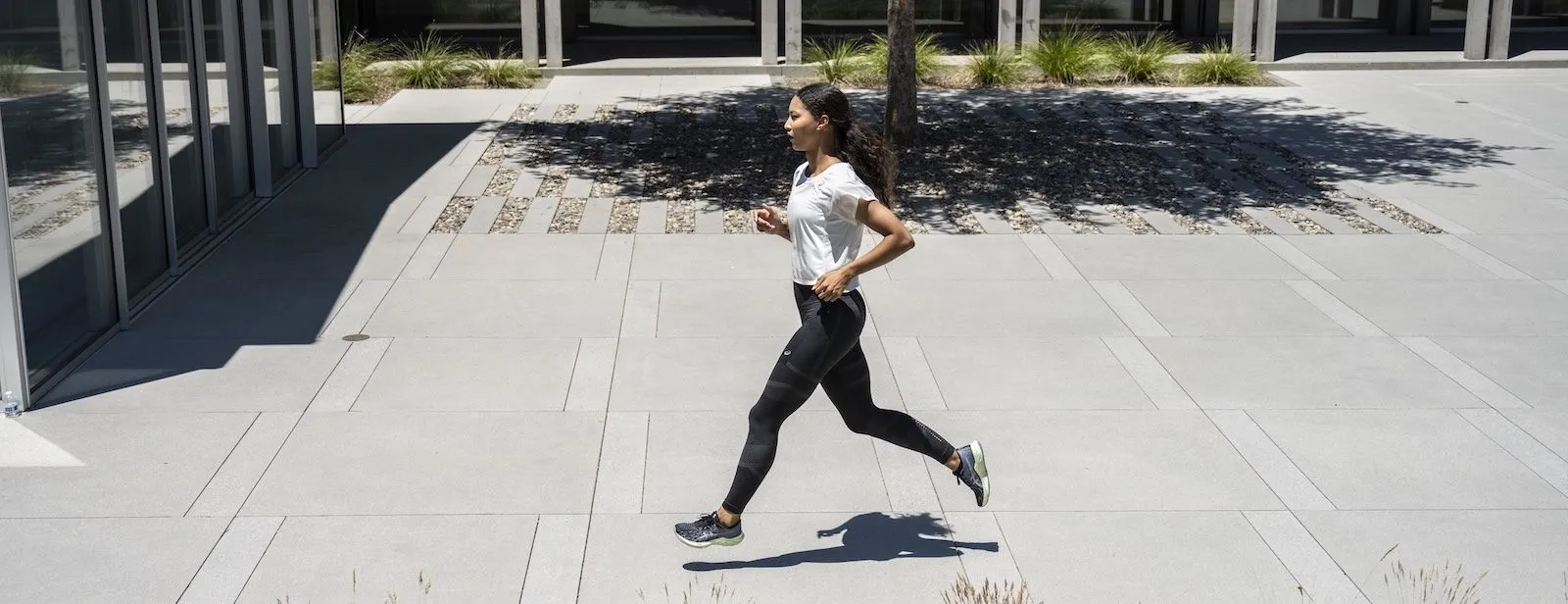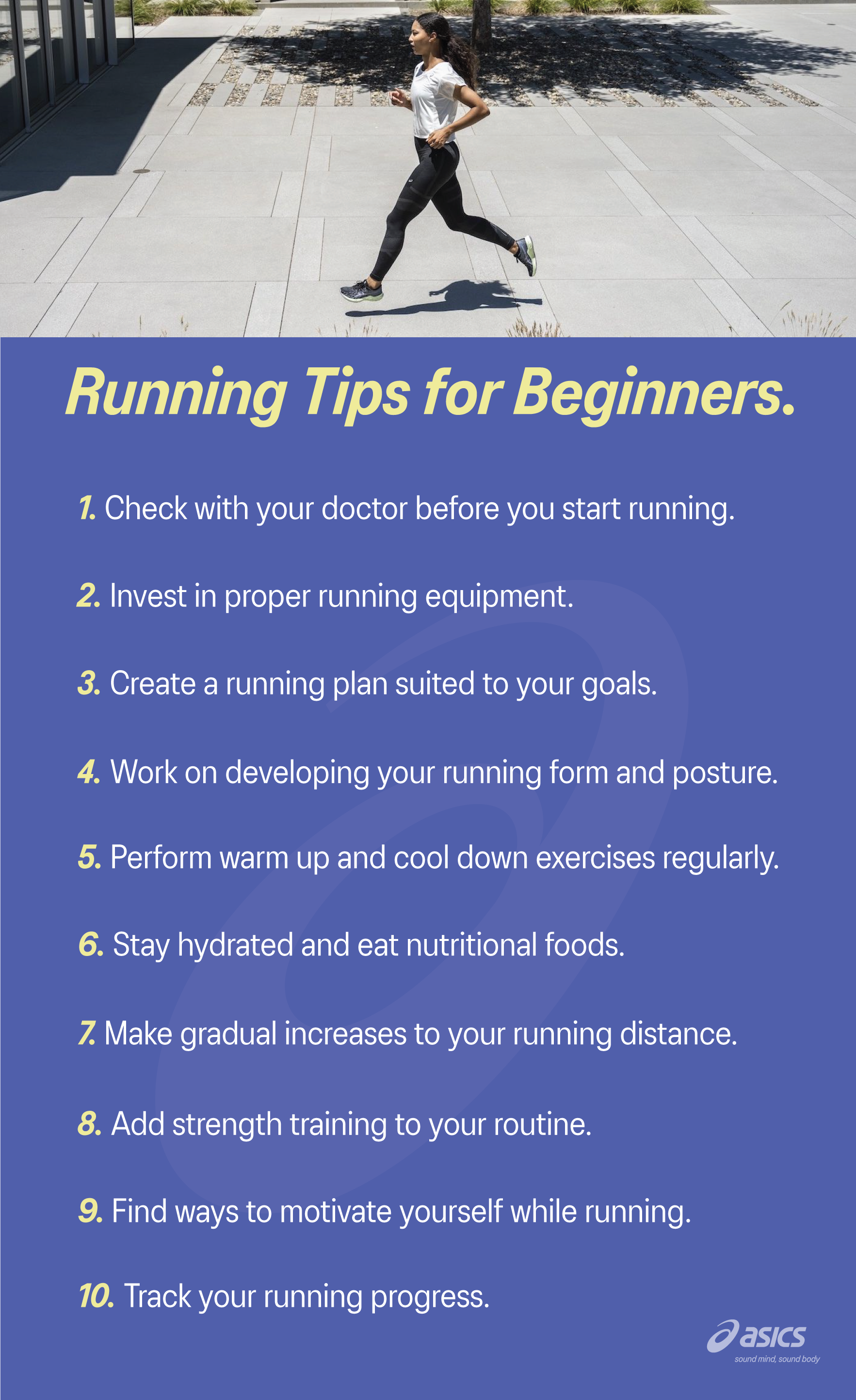
How to Start Running for Beginners
September 29, 2022 / ASICS Australia
Running is a great activity for a healthy lifestyle.
Runners can set their own pace, develop a training plan and travel. This exercise can impact more than just your physical health. The benefits of a regular running regimen often include more energy, improved confidence and lower anxiety.
What’s holding you back?
Why should I start running?
Running is an all-natural form of therapy. It can be a technique for coping with anxiety and depression in addition to sharpening memory and learning skills . Moderate aerobic exercises like running have been proven to increase blood flow and boost positive emotions in many adults.
Regular running can impact your body in a variety of ways. It can aid weight loss or weight maintenance efforts. Running can also reduce major health risks, such as cardiovascular disease , by lowering blood pressure and cholesterol levels. Read more on the effects of running with “ Benefits of Running ”.
Note: Dietary changes, too, are often an essential part of weight loss and heart disease prevention efforts. For prospective runners with a family history of cardiovascular, circulatory, or respiratory disease, consult a physician for risks potentially involved in a high-intensity activity.
Figuring out how to get into running can feel like a daunting task, but knowing the many types of running can determine which works best with your lifestyle.
What are the different types of running?
Before heading outside, it’s critical to know your running options. Finding the style that best suits your needs is essential.
- Road running. This style is mostly obstacle-free and a great way to get into running. It allows runners to focus on maintaining their speed.
- Treadmill running. You don’t always have to rely on going outdoors. Starting this exercise from a machine can be beneficial for runners seeking to adjust their form and increase their stamina before hitting the roadways. Treadmills come in all sizes and vary in price to fit any budget.
- Track running. Track surfaces and lengths are ideal for those just beginning to run. Its set length allows runners to set a comfortable pace when starting out. Also, tracks are often made using softer surfaces designed to lower the risk of foot and knee injuries.
- Trail running. Trails can provide challenging runs alongside various terrains and picturesque sights along the way.
- Competitive running. Tournaments add camaraderie and greater challenges into the mix. Competitive running distances typically range from 5k races all the way up to full marathons.
10 running tips for beginners
Starting off, running can seem stressful. It’s crucial to keep a positive mindset.
“Do not think about distance or time, but focus on having good feelings during and after your runs,” said Marco Anelli , an ASICS FrontRunner member.
The following tips can prove helpful for those wondering how to start running.

1. Check with your doctor before you start running
If you have a pre-existing medical condition and want to start running, it’s important to contact your doctor before you begin. This can help prevent any future injuries.
“We see all too often a beginner runner running beyond their current capability. Slowing down the pace will be more enjoyable and less stress on the body,” said Evan Scully, a physical therapist and FrontRunner member.
Learn more in our “ Prevent Running Injuries ” article.
2. Invest in proper running equipment
Wearing the right equipment (like clothing, running shoes) can positively impact your exercise. Proper cushioning and support in your shoes can make all the difference. Not only are the shoes you wear important, but the gear you wear is also key.
Examples of great gear for beginner runners are armbands (these are great to hold your phone as you run) and other apparel with pockets, so you have a place for your keys and other important items.
A gait analysis can also be beneficial for those who are just beginning running. The information it provides will help you decide which running shoes would work best for your needs. You can visit your local running store or select ASICS retail stores to get a gait analysis performed.
- Not sure where to start? Get inspiration for choosing the best gear for you with " Essential Running Equipment ".
- The type of shoe you wear matters! Find out more with " Running Shoes vs Training Shoes ".
- Understand the relationship between your gait style and performance with " Gait Analysis ".
- Hesitant on which shoes to buy? Read " Best ASICS Running Shoes for Beginners " to get started!
3. Create a running plan suited to your goals
It's necessary for rookies to create a running plan tailored to their needs and goals. “You should avoid increasing kilometers and speed at the same time. Take it easy and don’t increase your running more than 10% a week,” said Michelle Poulsen, a FrontRunner member.
- More of a morning person? Find motivation to lace up your shoes with a morning run.
- Fitting in a run after your tasks are completed is another common strategy. Get inspired by reading " Running at Night ”.
Your goal could be something like running in a 5k race or losing five kilos. Make sure your goal is something achievable.
4. Work on developing your running form and posture
Beginners should focus on developing a proper form. This involves keeping an upright torso, relaxed shoulders and arms swinging back and forth. A proper form can extend the longevity of your running session. You can find more information about running posture in the following articles:
- In need of ways to improve your posture? Read some helpful tips with " Improve Running Posture ".
- Get some tips with " How to Run Properly ".
5. Perform warm up and cool down exercises regularly
Properly warming up and cooling down your muscles with each running session is highly recommended.
“Warming up awakens our body, speeds up blood flow and prepares the circulatory system to work. It increases blood supply to the muscles and elasticity of the fibers. Depending on the type of training, the length and dynamics of the warm-up vary. It also prevents damage to the muscles and ligaments,” said Lukasz Klos, a physiotherapist and ASICS FrontRunner member.
Read more about the importance of warming up before your run and cooling down with the following articles:
- " Warm up Guide "
- " Running Stretches "
Before every run, warm up at a moderate pace for a few minutes and taper down likewise. Stretch after your warm up and at the end of the walk, concentrating on calves, thighs, hip flexors and hamstrings.
6. Stay hydrated and eat nutritional foods
Hydration is essential. Drinking plenty of water before, during and after a workout can help prevent dehydration.
As you exercise, your body releases sweat to help cool down. While sweating, heat is also removed from your body.
Beginners should replenish fluids with water to maintain strong performance. Aim for drinking about half a cup of water every 20 minutes.
Eating healthier foods can help provide more energy for your body and mind. A small, carbohydrate-dense snack 30 minutes beforehand can provide fuel for your run.
7. Make gradual increases to your distance
As you get comfortable with your running technique, gradually increase the distance. Warm ups will help build up endurance and prevent injuries.
To become more informed about how to prevent injuries while running, read “ Prevent Running Injuries ”.
A common mistake for many new runners is starting off too fast. Instead, ease into a training regimen by walking first and gradually introducing short sections of slow running. Tired runners should walk.
How long should I run as a beginner?
The length and frequency of runs varies from beginner to beginner. A 30-minute session is standard. You can also alternate between running, jogging and walking for added endurance.
8. Add strength training to your routine
The stronger your muscles are, the easier it will become to complete longer running sessions. Strength training can also be an effective way to improve your running speed . However, it’s important to obtain proper training shoes before beginning such a routine.
9. Find ways to motivate yourself while running
Demotivation can be common amongst those just starting out. One running tip for beginners is to listen to music, podcasts, or audiobooks to maintain your game. You can also run with a friend for support, or choose a scenic location for your run and enjoy the satisfying view.
10. Track your running progress
Tracking your progress can also help if you want to enhance your running game or plan to run in a race. The ASICS RunKeeper™ app is great for helping runners keep track of their progress.
To learn more about how to properly prepare and train for a long-distance race, you can refer to " Half Marathon Training Plan " and " Marathon Training Plan ".
Beginner running mistakes to avoid
Without caution, novice runners can accidentally put their health and well-being at risk. Following a beginner’s guide to running, in addition to avoiding these common mistakes, will help prevent injuries and improve your overall performance.
1. Wearing the wrong shoes. Running in the wrong pair of shoes can lead to problems such as plantar fasciitis, which is caused by running without proper foot support.
2. Skipping recovery days. Avoiding rest and recovery can overwork the muscles and cause strain.
3. Running too fast or for too long. If you over-extend your running, you can risk burnout.
4. Breathing incorrectly. Breathing infrequently while running can decrease the oxygen and blood flow that your muscles need while you workout, as well as cause cramping.
5. Ignoring pre-existing injuries. Running with a pre-existing injury can worsen the affected area, making recovery more difficult. Always follow the directions of your healthcare provider in managing any injuries or personal health concerns.
6. Setting your expectations too high. Runners start off differently. Having high expectations or comparing yourself to experienced runners is often discouraging and distracting.